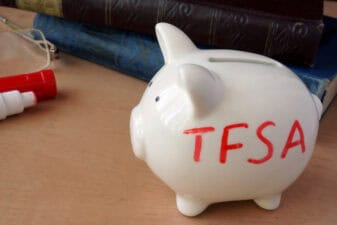Yes, it’s my first confession of the year: I hate budgeting.
I’ve tried them all: zero-based, 50/30/20, the “spending” first. I’ve used budgeting apps, budgeting software—heaven forbid—spreadsheets. Not one has stuck to me.
Until now.
For the past year or so, I’ve actually kept a steady budget. It’s not an app. It doesn’t even have a name in English. It’s called kakeibo in Japanese, and some practitioners claim it can cut your monthly expenses by 35%.
What is kakeibo?
Kakeibo means something like “household ledger.” That, in a nutshell, is what a kakeibo is: a physical notebook that holds your budget.
Logistically, kakeibo is simple. You buy a notebook, and write down your expenses in real-time. You organize your expenses based on four primary categories (needs, wants, culture, and unexpected). As you make purchases in real-time, you deduct your expenses from the money you have in your account (ideally the money you’re earning).
Here’s an example of kakeibo in action:
| Category | Date | Name of expense | Amount paid | Money left |
| Culture | Jan. 16, 2022 | Novel | $23.99 | $2,340.20 |
| Needs | Jan. 17, 2022 | Groceries | $155.55 | $2,184.65 |
Of course, you physically write this information. That’s non-negotiable: with kakeibo, you handwrite your budget as you earn, save, and spend money. No apps. No spreadsheets. No technology.
Kakeibo is more than just a physical ledger. It’s sort of a cross between budgeting and journaling. Before you make a purchase, kakeibo encourages you to reflect on your decision. For example, you could ask yourself:
- Can I really afford this?
- Can I live without this purchase?
- Do I have room for it?
- Am I attached to the idea of owning it?
- Will I actually use this?
By reflecting on a purchase, you become more aware of what you’re spending money on. This can help you save more money, sure, but it could also help you understand your relationship to money. What purchases are you attracted to? Do you ever stop to think why you’re spending your money on certain categories over others? These are the kinds of questions a kakeibo approach encourages.
How can you use kakeibo?
1. Buy a journal
Yes, we’re going back to the basics here. In order to use kakeibo properly, you should handwrite your expenses. Buy a moleskine, a bullet journal, or a spiral-bound notebook. Since you’re going to be using this ledger a lot, consider buying one that’s durable and can fit in your pocket.
2. List your income and fixed expenses
Your first expenses for the month will likely be “fixed:” rent, insurance, debt payments. Go ahead and deduct those from your income.
3. Set a savings goal
This is optional, but helpful for those who want to save money. Write down your savings goal after your fixed expenses. The money you have left is what you can use to spend.
4. List your expenses as you spend money
As you spend money, attach a category to each expense. You can use kakeibo’s categories (wants, needs, culture, and unexpected), or invent your own. Be sure to deduct the expense from the money that’s left in your account.
5. At the end of the month, reflect
Did you spend too much money? Was your savings goal too ambitious? Did you face too many unexpected expenses? Did a “want” throw off your month?
As you’re reflecting for next month’s budget, you can also answer these questions:
- How much money do you have?
- How much would you like to save next month?
- How much did you spend last month?
- How can you improve next month?
Is kakeibo right for you?
I’m a big fan of kakeibo, but I know it’s not right for everyone. If you’re the kind of budgeter who needs a very detailed budget, the kakeibo budgeting technique may feel too open-ended for you. Likewise, if technology helps you budget, if you like your excel sheets or budgeting app, switching to pen and paper may not be realistic.
But give it a try. You can use your kakeibo budget with a rewards card or cash-back card, too, helping you get some extra points in the process. Just write down your expenses in your ledger, tally up your total costs at the end, and pay off your bill when you get your statement.
At the end of the day, kakeibo could help you slow down and spend money more mindfully. That’s an overused word these days — mindfulness— but when it comes to money, a little mindfulness, coupled with frugality, could be what we need to save more for retirement.


